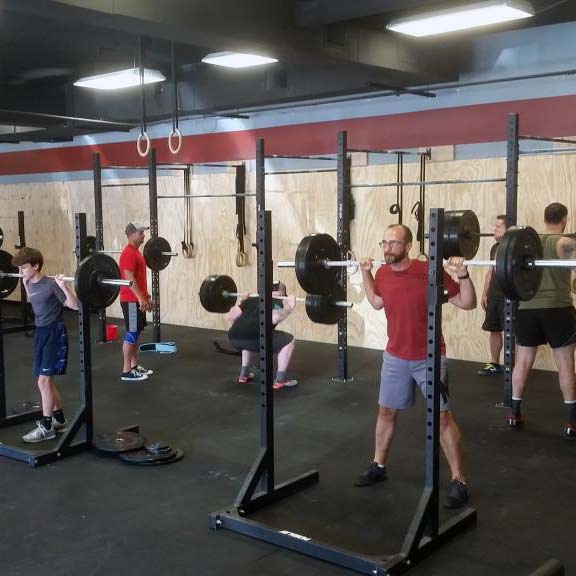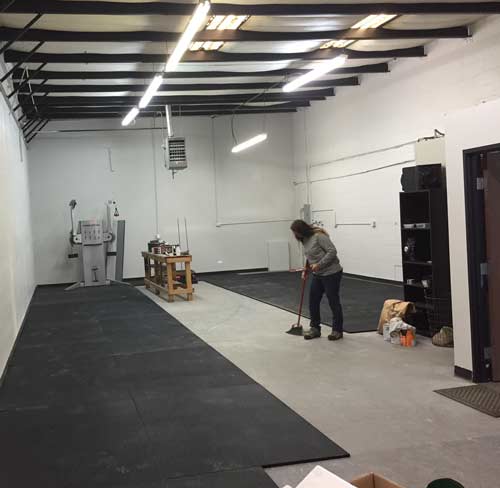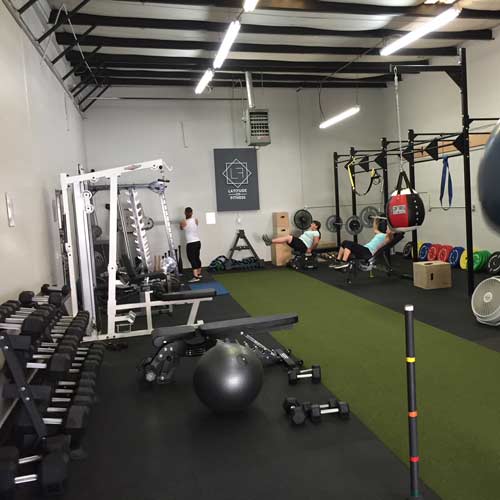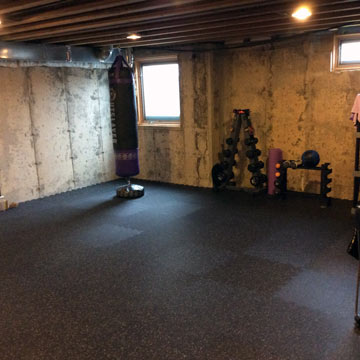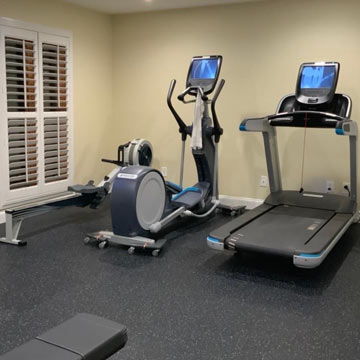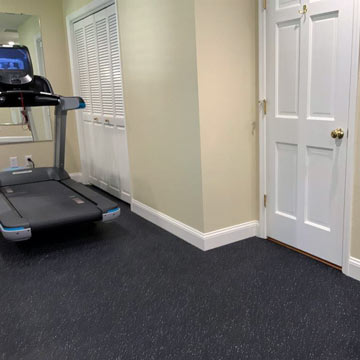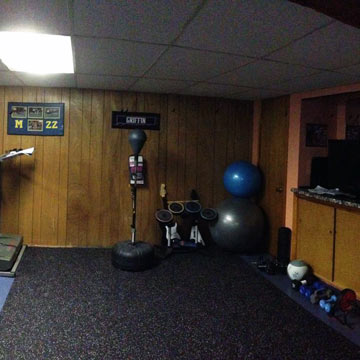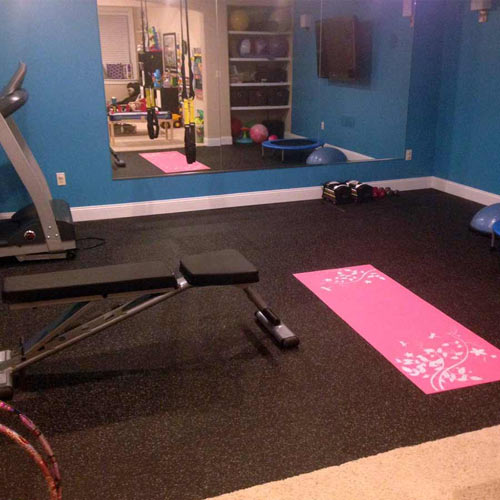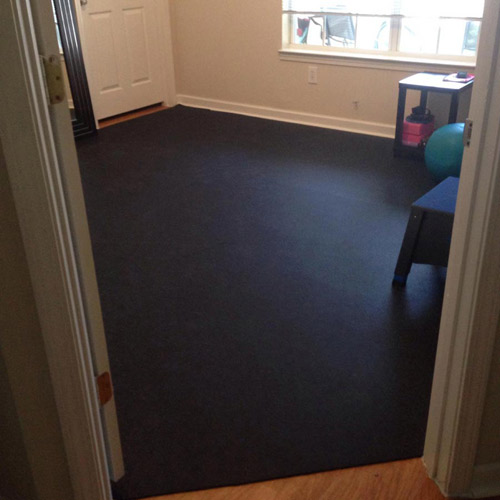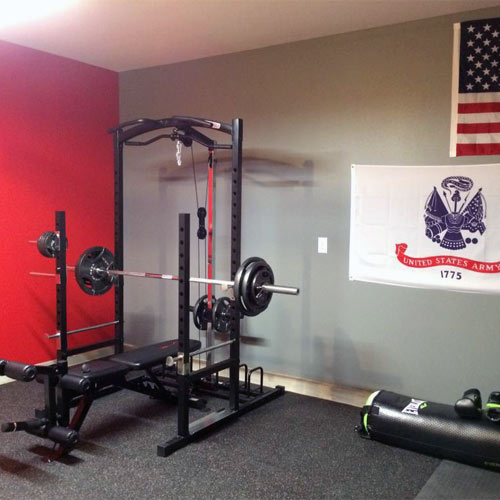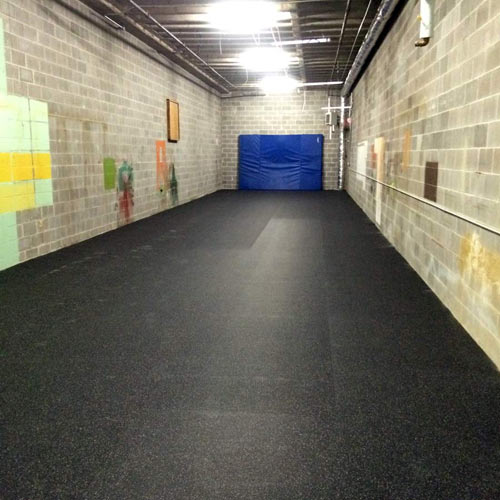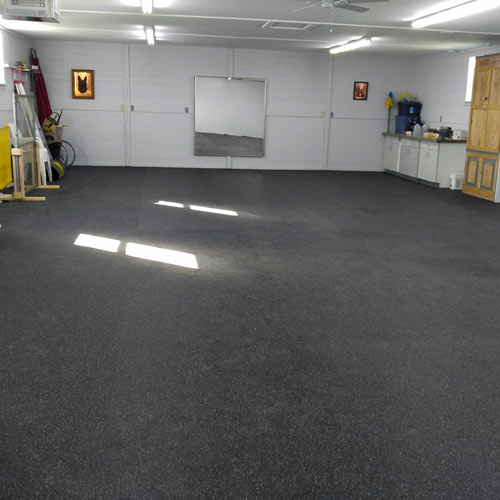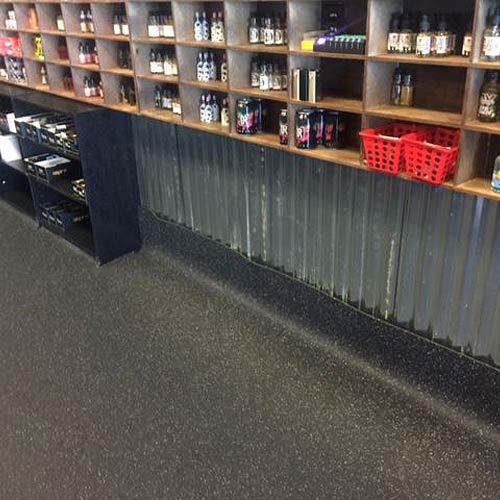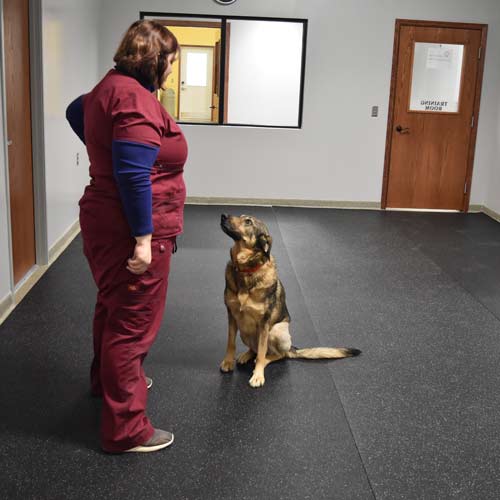Where Would You Use Resilient Rubber Flooring?
Related Product: Rubber Flooring Rolls Geneva 1/4 Inch 10% Premium Color Per SF
Some of the locations where resilient rubber flooring installations work well include:
- Workshop
- Institutional workspace
- Basement
- Kitchen
- Commercial gym
- Home gym
- Weightlifting areas
- Underneath exercise equipment
- Walking areas in ice rinks
- Horse stalls
- Dog crates
- Trailer floors
How Do You Install Resilient Rubber Flooring?
The installation options for rubber floors depend in large part on the configuration of the material.Adhesive: For a permanent type of installation, glue or tape the rubber to the subfloor. A thin roll or sheet will frequently require some sort of adhesive for the layout. However, installers can use adhesive on any sort of resilient rubber flooring, if desired.
No adhesive: Because rubber is a heavy type of flooring material, it often will not slide around without the need for adhesive. Large rubber mats work well for this use case, as would an interlocking tile.
If the installation will go over hardwood, over tile, or over laminate, and if the installer may want to return to the original subfloor in the future, choosing not to use adhesive allows for this option. (Just remember to place craft paper between a hardwood subfloor and the rubber flooring to prevent residue from the rubber staining the hardwood, as the craft paper provides a protective material.)
Do Interlocking Recycled Rubber Tiles Give You Durability?
Interlocking tiles are a popular selection for a layout where the desire is for resilient rubber flooring. An individual tile weighs less than a roll or a large mat, which simplifies the installation process versus other configurations.One of the most popular selections for installing a rubberized tile in an area that sees significant wear and tear is the Rubber Flooring Tiles Nuclear model. This tile is notable for its interesting look and color pattern, as it has a non-black base color with multiple color flecks in each tile.
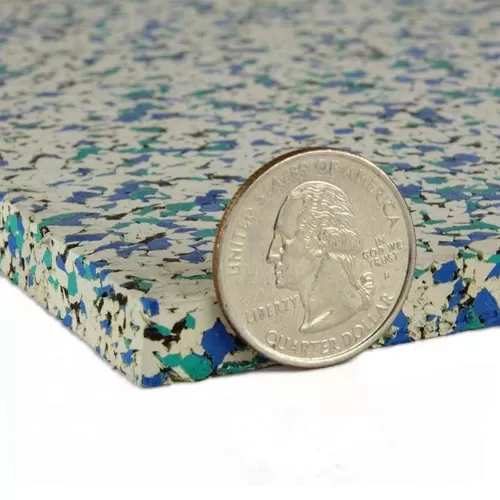
This product mixes high-quality virgin EPDM and premium recycled and renewable rubber material to give it great strength and durability. Each tile is American-made, using only the most precise manufacturing tolerances to create a resiliency that’s not commonly found. It will work for an installation anywhere the flooring must stand up to repeated rough treatment.
Another durable model that’s easy to install is the Interlocking Rubber Floor Tiles product. Each tile measures 2 by 2 feet with a puzzle-style edge that creates a tight fit for the overall layout without the need to use adhesives.
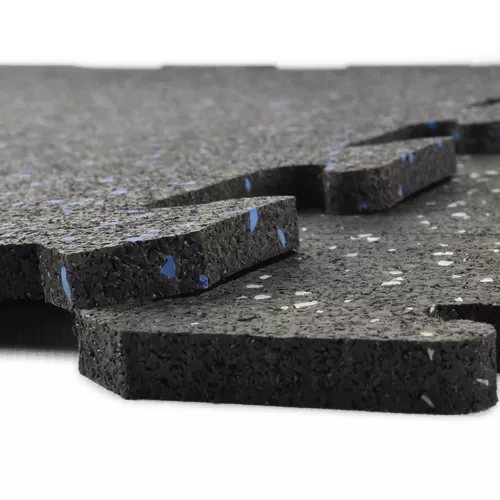
These tiles offer impressive durability, even though they only measure about 5/16 inch in thickness. The top wear layer will ensure these tiles, which have a 10% color fleck in a black base, will continue to look like new for many years to come. They will resist chemicals like ammonia, bleach, and disinfectant, giving the customer a long-lasting product at a great value.
What Advantages Do Thick Mats Have for Resilient Rubber Flooring?
For those who need a specific coverage area in their resilient rubber flooring installation, the outstanding durability in the Smooth Top Straight Edge Horse Stall Mat 3/4 Inch x 4x6 Ft. makes them a great choice.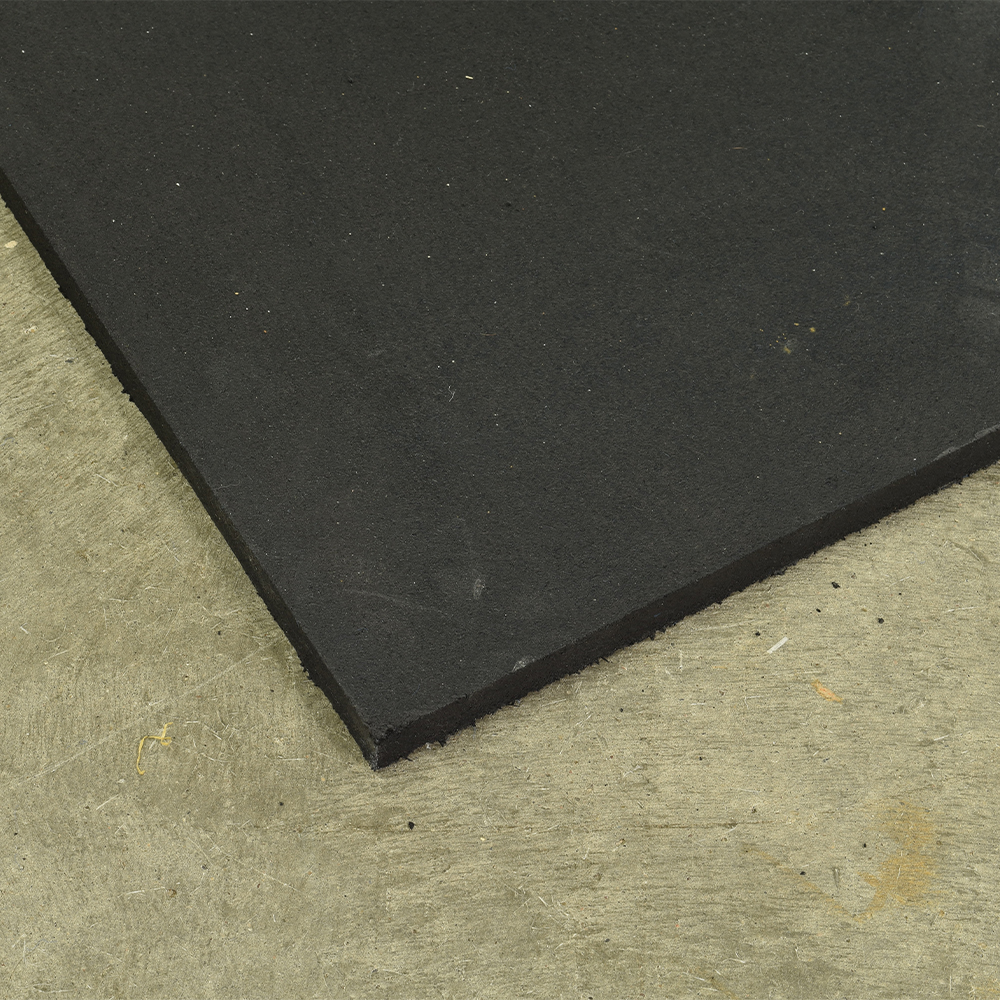
Each mat measures 4 by 6 feet with straight edges on all four sides for a clean-looking layout. The mat measures 3/4 inch in thickness, delivering a long-lasting product that will not show significant wear over time, even when used in a high-traffic area, giving it impressive resiliency.
At 105 pounds per mat, the material will use its own weight to stay in place without sliding around, which simplifies the installation process and gives the installer the option of returning to the original subfloor at some point in the future.
Can a Thin Rubber Roll Provide a High Level of Resiliency?
Some thin rolls of rubber will have the resiliency installers want, such as the Geneva Rubber Flooring Rolls product. This material provides a lot of benefits, including protecting the subfloor, supporting the weight of heavy equipment, providing cushioning in a home gym, and dampening sound.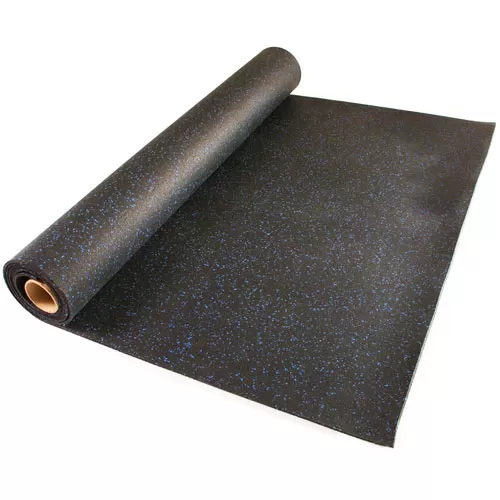
It measures only 1/4 inch in thickness, yet it has a long-lasting design that’s sure to give installers years of subfloor protection. The recycled rubber flooring may contribute to LEED points in green buildings.
Each roll consists of a black base color with a 10% fleck color available in more than a dozen choices. Some models use two colors of flecks in the roll. Because of the thin material in the roll, it’s easy to cut the roll to the desired length with a sharp utility knife.
